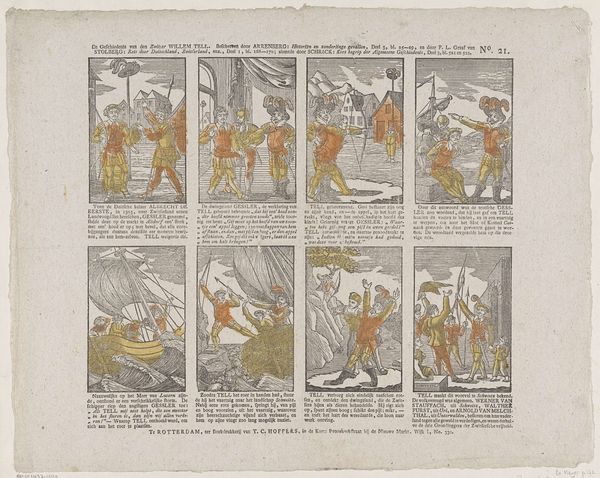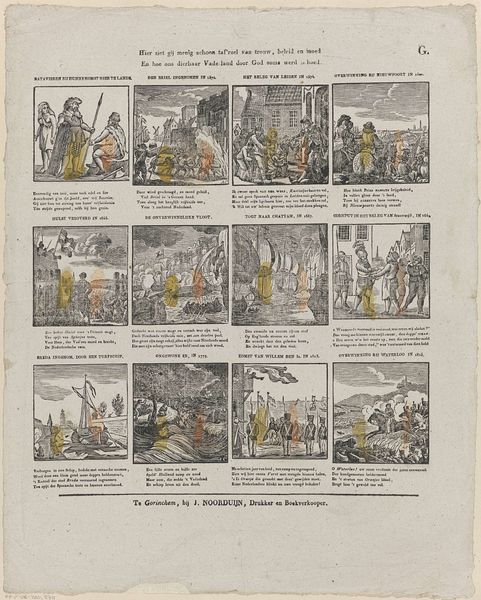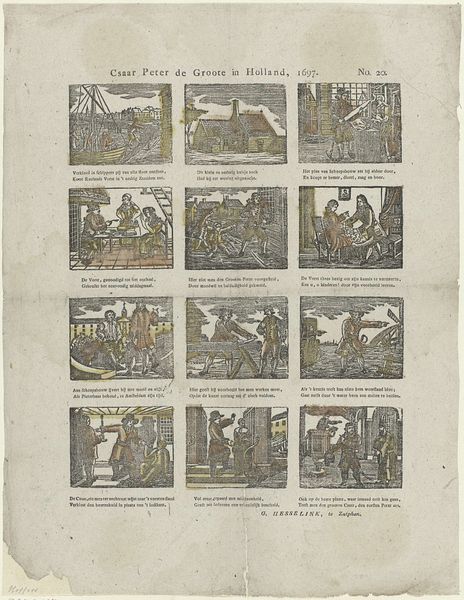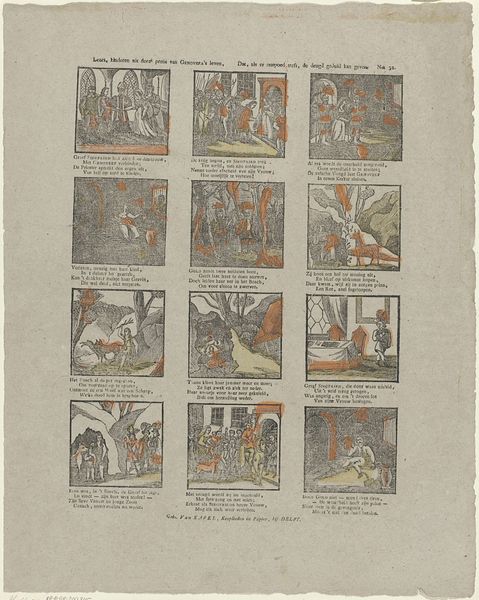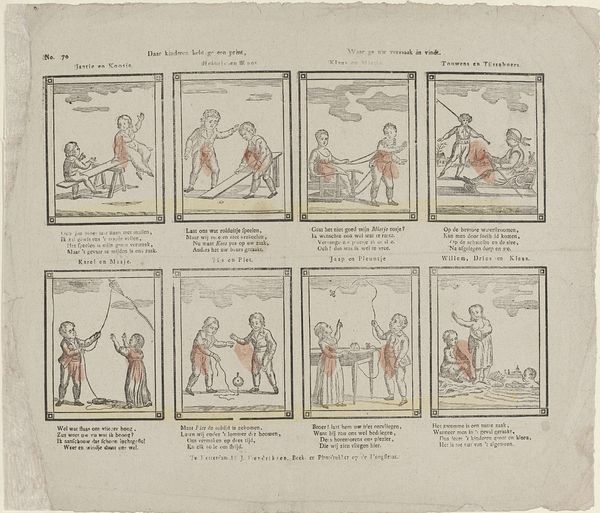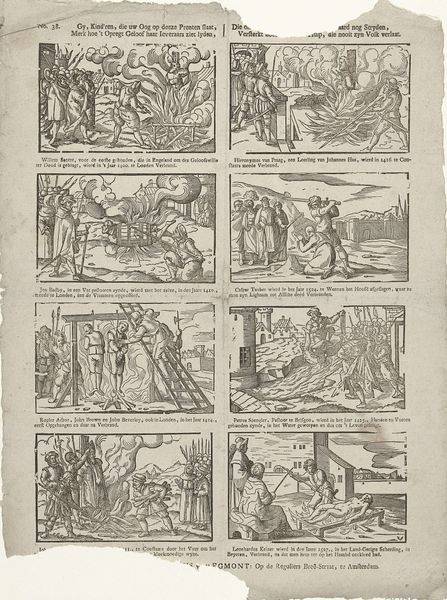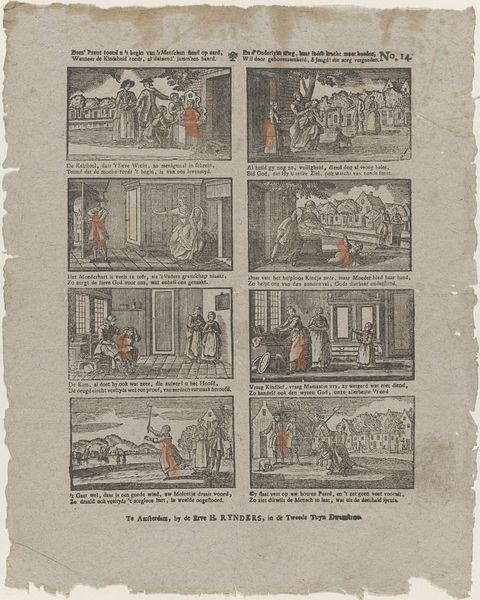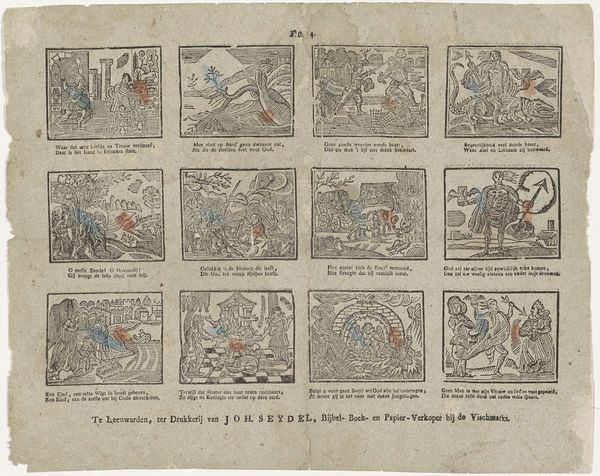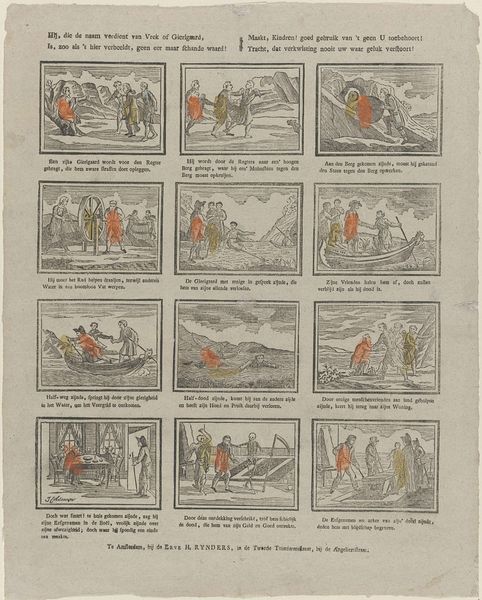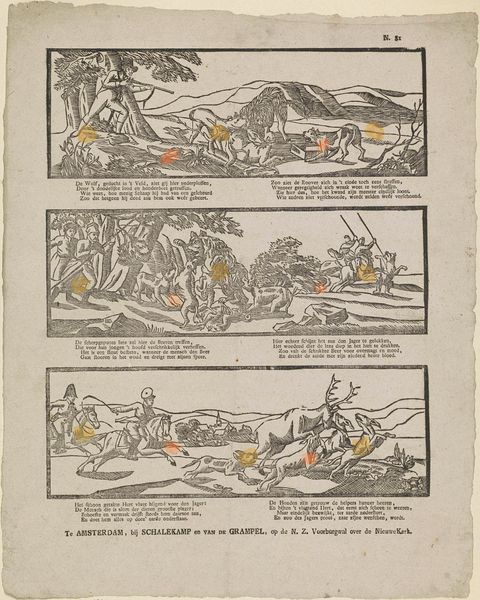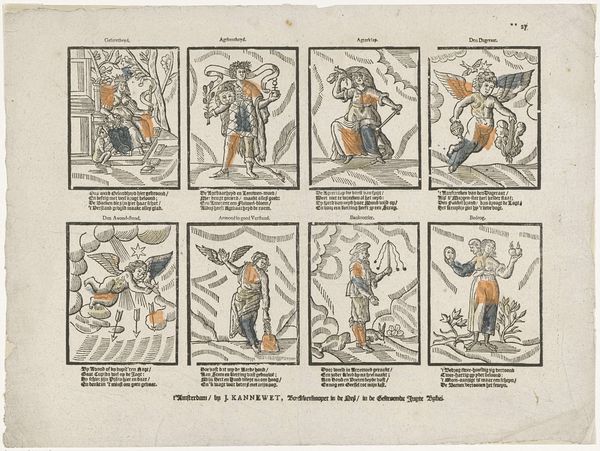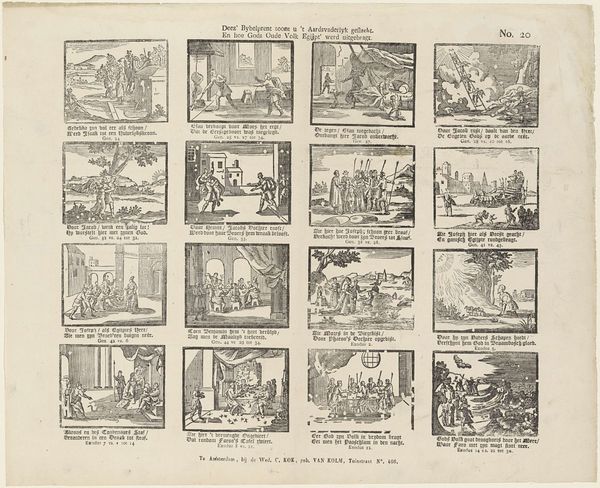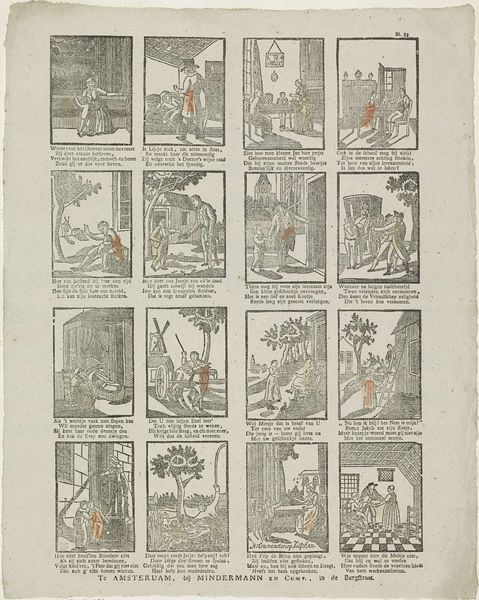
De geschiedenis van Tel uit het vrije Zwitserland, / Leert u, o lieve jeugd! de liefde tot het vaderland 1820 - 1838
0:00
0:00
print, woodcut
#
narrative-art
# print
#
folk-art
#
romanticism
#
woodcut
#
genre-painting
#
history-painting
Dimensions: height 322 mm, width 422 mm
Copyright: Rijks Museum: Open Domain
Editor: Here we have an intriguing 19th-century woodcut print by Christiaan Jacob Schuyling, "The Story of Tell from free Switzerland, / Teaches you, o dear youth! the love of the fatherland." It reminds me of a comic strip, a sequence of events unfolding. How do you interpret this work? Curator: It's more than just a narrative. It's about the construction of national identity, especially potent after the Napoleonic era. Notice how the scenes are compartmentalized, almost like individual lessons. This reinforces a specific, curated history for the young, focusing on patriotism. Editor: I see what you mean. The text beneath each image really emphasizes that lesson. But how does the Romantic style fit into this political messaging? Curator: Romanticism here isn't just about aesthetic beauty, but about emotional investment in the idea of the nation. Schuyling uses folk art elements to evoke a sense of authentic, shared cultural heritage, something often leveraged in nation-building. It invites a connection, doesn't it? Makes you question, who is this "fatherland" really serving? Editor: It definitely challenges a simple heroic reading of history. I am also curious about the representation of authority – is there a subtle critique woven in there? Curator: Precisely! Think about the dynamics of power presented and who benefits from them. Even a story ostensibly about freedom can be used to instill obedience to a certain ideology. What seems like simple folk art might be an invitation to consider deeper social dynamics at play. Editor: I hadn’t thought about it that way. Looking at it again, I am amazed to observe the amount of cultural construction being accomplished. Curator: Exactly. And remember, context is crucial; analyzing folk narratives with an intersectional approach offers new dimensions of interpretation.
Comments
No comments
Be the first to comment and join the conversation on the ultimate creative platform.
